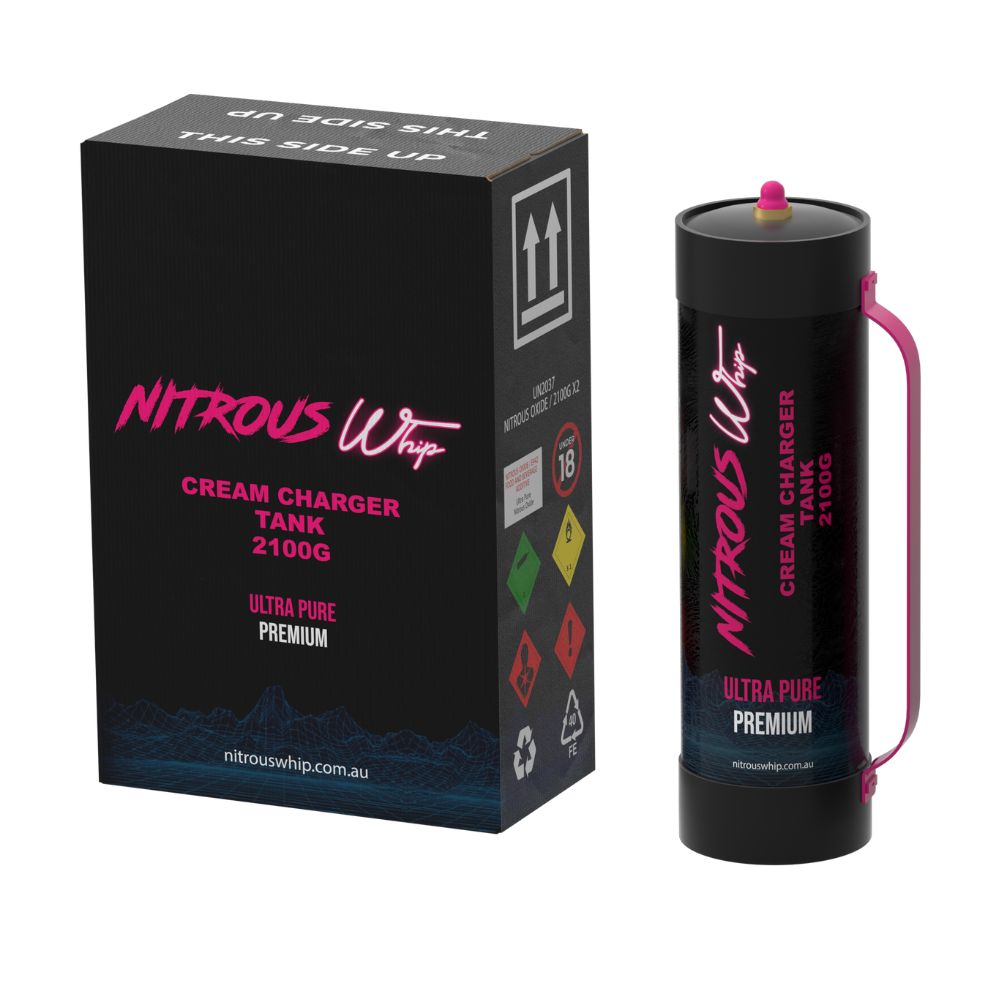
Sustainable Practices in the Production of N2O Cream Chargers
Introduction: The Whipped Revolution
In a world increasingly mindful of ecological effects, the production of everyday products is undergoing considerable transformation. One such item, N2O cream chargers, has actually discovered itself at the crossroads of convenience and sustainability. Known for their ability to work up delightful developments from whipped cream to frothy desserts, these little canisters are typically overlooked when going over sustainable practices. But what is the real image? How are manufacturers adjusting to guarantee that they're not simply creating convenience however doing so in an eco-friendly manner?

In this post, we will delve deep into the sustainable practices surrounding N2O cream chargers, exploring whatever from sourcing materials to production procedures and end-of-life disposal. Buckle up, due to the fact that this journey through the world of whipped cream chargers is not practically fluff-- it's about making a difference!
Sustainable Practices in the Production of N2O Cream Chargers
What Are N2O Cream Chargers?
N2O cream chargers, frequently referred to as cream chargers or https://46432.b-cdn.net/cream-chargers/api-quota-exceeded-you-can-make-500-requests-per-day912721.html nitrous oxide cream chargers, are little steel canisters filled with nitrous oxide gas. They work as a propellant for whipping cream and are commonly used in cooking areas around the globe-- from professional pastry chefs to home cooks.
The laughing gas inside these canisters produces pressure that forces liquid cream through a nozzle, leading to light and fluffy whipped cream. Nevertheless, as customer need grows, so does scrutiny over how these products are made and disposed of.

The Ecological Impact of Conventional Production Methods
While it's easy to value the delightful outcomes of using whip cream chargers, we need to likewise consider their ecological footprint. Conventional production approaches typically count on non-renewable resources and involve energy-intensive procedures that contribute substantially to greenhouse gas emissions.
Energy Consumption
- Manufacturing Process: The creation of steel cylinders requires substantial energy inputs, mainly stemmed from fossil fuels.
- Transportation Emissions: As soon as produced, these chargers need to be transported worldwide, contributing further to carbon emissions.
Waste Generation
- Single-use Products: Numerous consumers treat N2O cream chargers as single-use items, resulting in increased waste.
- Recycling Challenges: Although steel is recyclable, not all users dispose of their chargers properly.
Shifting Towards Sustainable Practices
With increasing awareness around environmental problems, lots of makers have started transitioning towards more sustainable practices in producing N2O cream chargers.
Sourcing Eco-friendly Materials
One major step is sourcing materials responsibly. Manufacturers are turning to recycled steel for their containers rather of relying solely on virgin materials. This lowers mining activities and decreases energy consumption related to steel production.

Optimizing Production Techniques
Innovative approaches like adopting renewable resource sources-- solar or wind power-- throughout producing procedures are gaining traction. This lowers total emissions related to traditional energy sources.
The Role of Innovation in Sustainable Practices
Advancements in innovation play a crucial function in boosting sustainability within the production chain.
Efficient Production Lines
Modernized assembly line utilize automation to improve performance while minimizing waste during production. These systems assist decrease flaws and resource wastage.
Packaging Innovations
Using eco-friendly or recyclable product packaging helps in reducing ecological effect while maintaining product integrity throughout transport.
Lifecycle Analysis: Understanding Effect from Start to Finish
Conducting a lifecycle analysis (LCA) makes it possible for makers and customers alike to understand the thorough environmental effect associated with N2O cream chargers-- from basic material extraction through disposal.
Material Extraction Phase
Understanding where products originate from allows makers to make educated options about sourcing practices that reduce environmental disruption.
Manufacturing Phase Dynamics
Evaluating energy use and waste generation during manufacturing deals insight into potential enhancements that could be made for greener operations.
End-of-Life Considerations
How do users get rid of these products? Encouraging recycling programs can foster responsible consumer behavior while making sure that valuable materials do not wind up in landfills.
Consumer Awareness: The Role We Play
Consumers hold tremendous power when it concerns promoting sustainability. By making notified choices about items-- like selecting brand names that prioritize eco-friendliness-- people can drive change across industries.
Making Informed Choices
When getting whipped cream chargers:
FAQs About Sustainable Practices in N2O Cream Charger Production
- They are mainly made from steel and filled with laughing gas gas ideal for light whipping creams and other cooking delights.
- Understanding these practices assists you make informed options that positively affect our world's health!
- Yes! Steel is highly recyclable; nevertheless, it's necessary that users follow local guidelines regarding disposal and recycling protocols.
- Yes! Some companies are checking out plant-based alternatives or recyclable dispensers which could decrease overall waste generation.
- Traditional production processes contribute significantly through high energy use and emissions; nevertheless, sustainable practices aim to mitigate this impact.
- Refilling isn't generally advisable due primarily to safety issues; always choose brand-new products unless specified otherwise by manufacturers.
Conclusion: A Sustainable Future Awaits
The journey towards sustainability within the realm of whipped cream chargers may seem daunting initially look-- however it's definitely achievable! As both manufacturers and consumers become progressively familiar with their responsibilities toward our planet, meaningful strides can be made toward environmentally friendly practices throughout every phase-- from sourcing raw materials right down to end-of-life disposal options.
By embracing innovative technologies and prioritizing responsible behaviors surrounding our beloved N2O cream chargers, we pave the way for a future where tasty productions don't come at an unbearable environmental expense! So let's work up some enjoyment around sustainability together-- due to the fact that every small action counts towards maintaining our lovely Earth!
Now it's your turn! What modifications will you dedicate yourself towards making more sustainable options when utilizing your preferred kitchen gadgets?